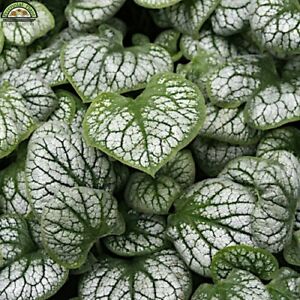
“Last night I dreamt I went to Manderley again.”
That evocative line, from Daphne du Maurier’s novel Rebecca, has become famous, casting an elegiac spell over the rest of the story. I have similar thoughts and dreams about gardens in my past. I am certain that other committed gardeners have the same experiences.
Not long ago, I was talking to a friend who is also an excellent gardener. She and her husband had just trekked up a steep hill to the site of a now-demolished mansion. Though the structure was gone and the plot was overgrown, they found the remnants of an interesting garden, complete with constructed grotto. Those remains piqued their curiosity about the former estate’s story.
I had a similar experience recently in a state park in New York’s Hudson Valley. My daughter and I visited the site of a large country house that was built in 1910 and largely destroyed by fire in 1958. The stone portions of the house, including the foundation, first floor walls and chimneys still stood, as did a number of outbuildings, including a concrete pool and greenhouse. Tiles that were part of original fireplace surrounds and patios survive, exposed now to the elements and bearing silent witness to the life that flourished in the house for nearly half a century. Signs on the property described the landscaping that once tied the estate together, and traces of the various gardens were still evident. The long driveway leading to the burned-out structure is bordered by the exuberant and untamed vinca that was probably planted a century ago.
Most people who remember that house and garden in their glory days are now gone. The evocative remnants that survive in that haunted space made me wish that the estate gardens could be reconstructed around the ruins, as has sometimes been done—especially in Europe–with other skeletal structures.
I have vivid memories of the many significant and famous gardens that I have seen over the years, but the sweetest memories are of two very personal landscapes, one long gone and one still growing strong.
The house where I grew up was sold long ago, and I am not sure if anything of my father’s garden remains except in my memory. He grew strawberries and raspberries and even tried to espalier an apple tree once. That effort ended after the first year when a squirrel ate his entire harvest—one apple.
One side of that garden was bordered by tall pine trees and not much grew underneath except for the purple and yellow Johnny-jump-ups or Viola tricolor that sprouted every spring. Some previous owner of our house must have planted them, along with the lilies-of-the-valley that grew near the back door in the company of a purple lilac. Mint grew rampant underneath it. When English relatives visited one year they used it to make very tasty—and very traditional—mint sauce to go with a leg of lamb.
My father never made grand romantic gestures, except in the garden, where he planted a long bed of white, pink and rose peonies. A ‘Peace’ rose, with its soft pink, yellow and white petals climbed up a trellis anchored to the garage, producing huge blossoms throughout the gardening season. Less fragrant, but just as flashy were the classic hybrid tea roses growing in an island bed bordered in sweet alyssum.
A long row of Lombardy poplars bounded the rear of the lot, with a big clump of fragrant, sky-blue iris on one end. Off in a shady corner, a giant rhubarb plant came up every year. None of us liked rhubarb, but I think my mother encouraged a neighbor to take the young stalks in the spring. The neighbor’s family got rhubarb pie and we didn’t feel guilty about having a giant plant that no one really cared about or encouraged.
My other garden, still extant, though only intermittently cared for, is at my family’s summer cottage in the Finger Lakes region of New York State. I have planted two small beds, but my green-thumbed aunt planted a much larger hillside bed back in the nineteen forties. Vinca and lilies-of-the-valley still vie with each other for space there, interrupted by some large false forget-me-not or Brunera macrophylla plants, which produce dainty blue flowers in the spring. Hostas muscle in on the act in the shady areas and a ‘Dorothy Perkins’ rambler threads its way throughout, rooting in places where the stems touch the dirt. At the top of the hill, an old purple lilac, which may have predated my aunt, reaches for the sun and puts out fragrant panicles in the spring. Old-fashioned cypress spurge, known to plant taxonomists as Euphorbia cyparissias, grows under it. Elsewhere on the property, on the edge of the old orchard, a few poeticus type narcissus bloom every spring, having outlasted all but a few of the original apple trees. The woods behind them are now filled with black walnut trees, which self-sow with wild abandon.
I only see that garden once or twice a year, so it is also mostly a garden of memory. I do have one souvenir, however. Long ago I took a stem cutting of ‘Dorothy Perkins’ and brought it home with me. It rooted quickly and now it is so unstoppable that I prune it back severely every fall to keep it from taking over the entire neighborhood. While it cannot compare with an abandoned grotto or a romantic ruin, it is enough to invoke a whole landscape of remembered gardens
